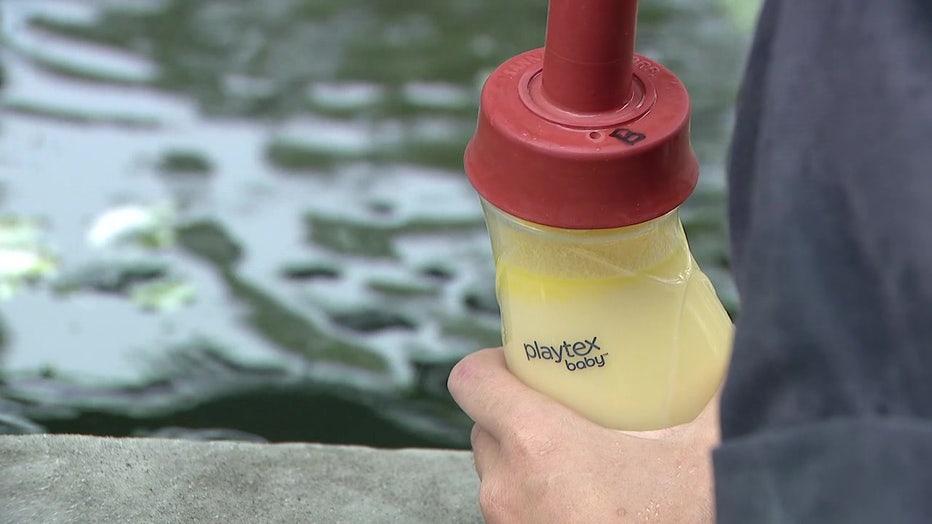Manatee calves slowly hitting milestones at ZooTampa
Manatee calves slowly hitting milestones at ZooTampa
FOX 13 photojournalist Barry Wong takes us to ZooTampa where two manatees are making strides.
TAMPA, Fla. - Two of the newest members at the Manatee Critical Care Center at ZooTampa at Lowry Park are two of the youngest patients.
Biscayne and Firecracker were brought in at around 60 pounds, which means the two males were newborns.
"When we receive an orphan calf, they have a very long road ahead of them. Typically, they'll stay with us for about two years," ZooTampa Animal Care Supervisor Lisa Smith said.
Biscayne arrived in June, while Firecracker was rescued on July 4. Initially, ZooTampa caretakers must join the manatee calves in the water to teach them how to use a bottle.

"We remove ourselves from the water as quickly as possible. That way, we're setting them up for success when they do get released back out," Smith explained. "We don't want them to associate us too much with food, so we want to keep their natural manatee lifestyle as much as possible."
With manatee calves, there are natural checkpoints that caretakers need the animals to hit. Recently, Biscayne and Firecracker have transitioned to full-strength formula and no longer need their 2 a.m. bottle.
READ: Australia aquarium hosts adorable gender-reveal party for penguin chick
"We have to go very slowly with introducing the milk formula in for them because just like a human baby they can get very colicky, gassy, get an upset stomach," Smith explained.
The manatees will be bottle-fed until they reach 300 pounds. After that, they will remain at ZooTampa for another year, with the goal weight of 600 pounds.

"That is when they typically leave mom out in the wild, so we want to make sure we set them up for success, that they are at a good age and weight to survive on their own," Smith said.
Biscayne and Firecracker are two of around 20-25 manatees that ZooTampa usually has. The zoo is currently building two additional critical care pools to add to the three it currently has. Because they are susceptible to human-caused injuries like boat strikes and mass die-off events, like starvation from pollution or algae blooms, the need for more manatee critical care units continues to grow.
"There's a lot that can happen to their population in a very short amount of time, so any animal that we can bring in and release back out into the wild is truly impactful to that population, so that they can go out and hopefully continue to have calves and grow that population," Smith said.
For more information, click here.
STAY CONNECTED WITH FOX 13 TAMPA:
- Download the FOX Local app for your smart TV
- Download the FOX 13 News app for breaking news alerts, latest headlines
- Download the SkyTower Radar app
- Sign up for FOX 13’s daily newsletter

